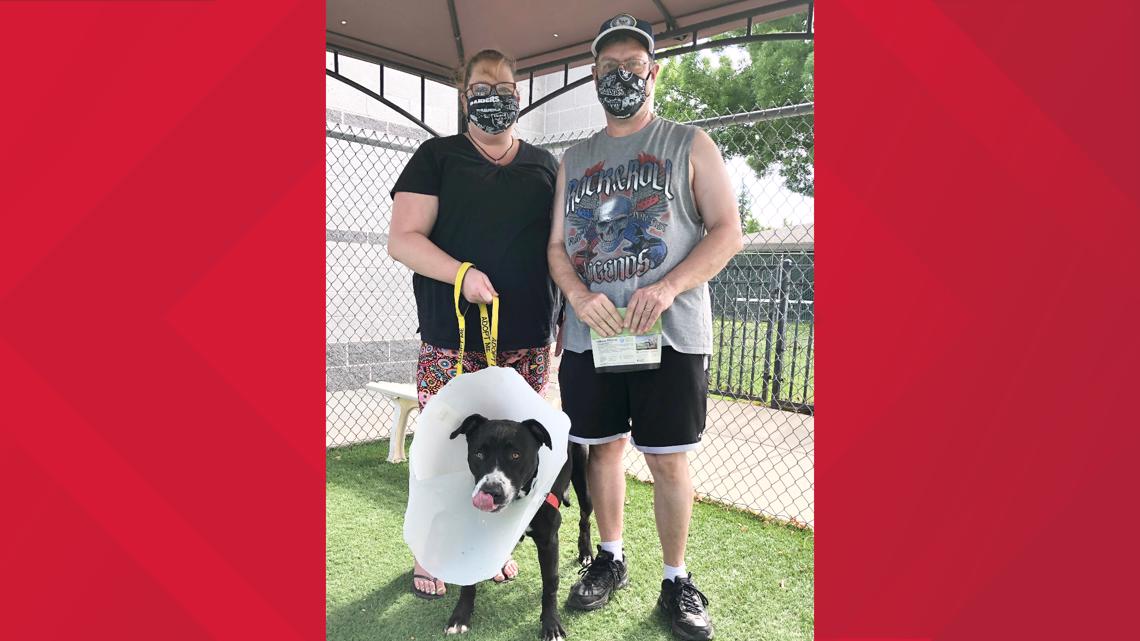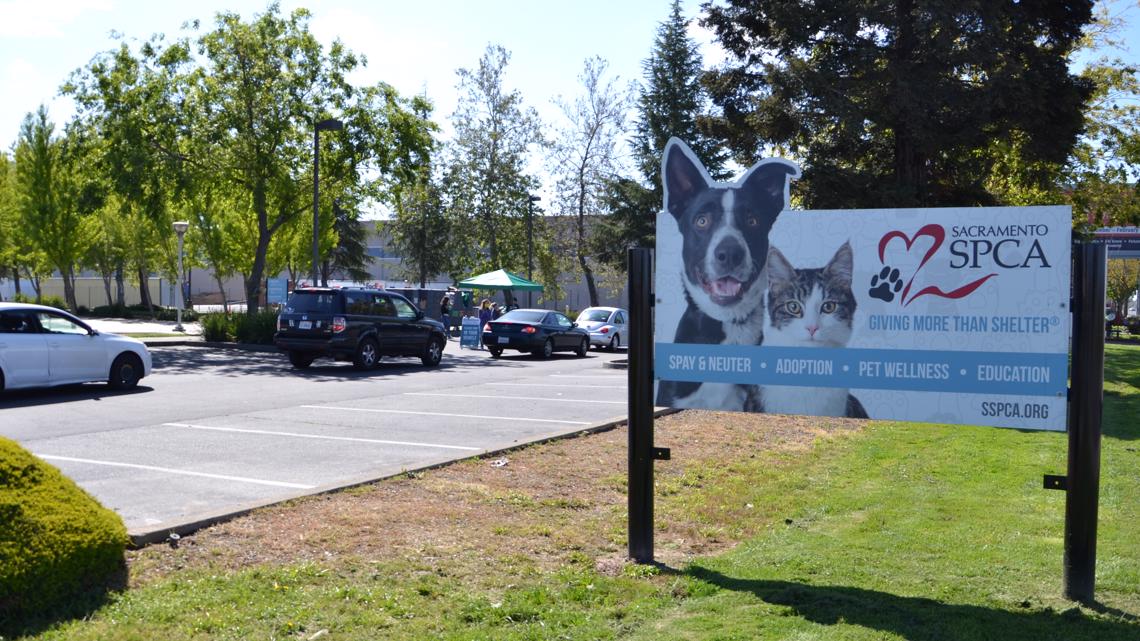SACRAMENTO, Calif. — Like many people waking up to a new world at the start of the pandemic, Katie Ingram, animal services manager at Placer County Animal Services, was asking herself an all too common question as the coronavirus was causing businesses to shutdown: well, what now?
"Gosh, if you had talked to me last March, I just remember that moment where I was like, 'what are we gonna do'," Ingram said. "You know, this is an industry that relies on people walking through our doors and, you know, browsing animals. And how do we accomplish our mission without that?"
Ingram was at a loss. How would the Placer County Animal Services assist animal owners and people looking to adopt with COVID-19 safety precautions in place?
As it turned out, local animal shelters would make it out just fine amid the pandemic.
"You know, looking back, I want to give myself a pep talk like, don't worry about all that," Ingram said. "But, it's amazing how shelters come together."
ABC10 talked to three local animal shelters — Placer County Animal Services, Front Street Animal Shelter, and Sacramento SPCA — and one expert in shelter medicine research at UC Davis to determine what has gone right for these organizations during the coronavirus, and what challenges still lie ahead one year after the start of stay-at-home orders.
Animal shelters amid the pandemic: one year later
A RISE IN SOCIAL MEDIA
One surprising result of the pandemic is that some shelters are not as packed with animals in the first place. Adoption demand skyrocketed with people staying at home more, but there are also just less animals arriving at the shelter.
Ryan Hinderman, communications and customer service manager for Front Street Animal Shelter, said that a drop in animal intake — or, the number of stray and surrendered animals arriving at a shelter — coordinates almost perfectly with the stay-at-home orders.
"When the humans are away, sometimes the pets will play…or run away," Hinderman said.
Kate Hurley, director of the Animal Shelter Medicine Program at UC Davis, offers another explanation: social media.
A rise in community social media pages and sites allowed people to post about finding lost pets or help those who are looking for missing animals. Shelters can communicate resources directly to people in need, too.
"Sacramento is a very diverse community with lots of different languages and subcultures within it," Hurley said. "And if a pet gets found and it can be posted [about] on social media, in the neighborhood, in the language that is spoken in that neighborhood so much more likely that it's going to get back to its family."
Hurley adds that this allowed "thousands and thousands" of better solutions to be found that did not involve the knee-jerk reaction of taking an animal to a shelter.
Sarah Varanini, social media and PR specialist for Sacramento SPCA, said that while social media has always been in their toolbox, COVID-19 has definitely had an impact on how it is used.
"We've definitely seen an increase in the community using social media as a form of communicating directly with us," Varanini said. "So instead of being able to come down to the shelter and have a question answered, you can simply send a message to you know, a page and get a response."
HIGH ADOPTION DEMAND
The demand to adopt animals is extremely high right now, so much so, that the Sacramento SPCA's appointment-based system can barely keep up.
"Our appointment links are booked within one or two minutes every day," Varanini said.


In the past, longer-term shelter animals used to stay for months. Now, even adult cats, which were previously difficult to get out the door, are snapped up by eager adopters.
"And some dogs and cats are lasting hours. Hours on the adoption floor," Varanini said.
Sacramento SPCA, Front Street, and Placer County said they are noticing a similar trend in this area that wasn't so common before: people coming in from outside the region because their local shelters have also run out of adoptable animals.
"We've even had people come in from the Bay Area to adopt because there was nothing available there," Hinderman said.
Placer County and Front Street in particular noted positive developments due to the increase in foster volunteers.
"It is so much better for the animals," Ingram said. "They're thriving in the homes. We're learning so much more about their personalities and what they're actually gonna be like in a family setting."
The animals are just happier being out of the shelter setting. Plus, Ingram says many of the animals they put out for foster care never have to return to the on-site shelter at all because they get adopted out through virtual meet and greets and social media promotion.
Front Street Animal Shelter is even having people who want to adopt a dog or cat foster the animal for a few weeks. Hurley said this type of arraignment allows a potential owner to really see an animal's personality without the problems that may arise if the animal is not a good fit.
"It's kind of like being able to date before you propose marriage," Hurley said.


INDIVIDUALIZED ANIMAL CARE
With less animals in the shelter due to decreased intake and an uptick in adoptions, shelters have found that they are more flexible to do what they really specialize in: top tier, hands-on animal care.
Hurley likens overall decongestion of the shelter with what we have seen with high capacity in hospitals during COVID-19.
"It's just not where animals want to be," Hurley said.
Less intake and higher adoption rates mean there is less animal illnesses, such as kennel cough. There's also less anxiety and depression in the animals, because they are not in the stressful shelter environment for long periods of time.


On the same note, shelter staff can focus on the most difficult cases that come into their care — injuries, chronic conditions and behavioral issues.
"We're also able to kind of individualize care better — you know, whether it's medical care and rehabilitation, or those dogs that do have severe behavioral problems — we're able to spend a lot more time with them, because we're not having to spend all of our time cleaning and feeding and walking the dogs," Hinderman said.
CHALLENGES STILL AHEAD
Shelters had to adjust quickly, and in some of those efforts, other important aspects have been slower to catch up. Spay and neuter clinics, for example, are steadily working through their backlog.
"We did have to close our spay and neuter clinic for a few weeks, and that had a huge impact," Varanini of Sacramento SPCA said.


Varanini said closing down the clinic led to a rise in kittens that came into the shelter. The Sacramento SPCA actually had plans to expand their spay and neuter clinic in 2020. They faced some uncertainty, but staff pushed ahead and did it anyway. Now, they're doing about 40-50 surgeries a day to work off the waitlist.
When people start returning to work or enjoying the activities they used to outside of the home, this could result in other changes.
"We're all now gearing up for what we think is the next phase of the impacts, which could potentially be, people losing housing, people…who have lost jobs, not being able to afford medical care for animals," Ingram said.
Some of the systems put in place during COVID-19, like appointments, could help lessen the pressure shelters could face once things return to normal.
"I think what I'd love the community to know is just that there is still a tremendous need, and there could be a tremendous additional need of foster homes, adoption placement supplies to help shelters better prepare," Ingram said.
In the end, at least for these local shelters, some of the adjustments are going to be used in the future due to the positive changes they've wrought. And that's a good thing.
"I think, you know, one hesitates to really talk about some of these upsides of the things that we've been forced into by COVID because the overall situation is such a tragedy, but I do think that, you know, it's led to a lot of breakthroughs for shelters in California and in the U.S. generally and really a lot of positives that have come out of it," Hurley said. "And I think the hope is that we can continue those as things open back up."









































